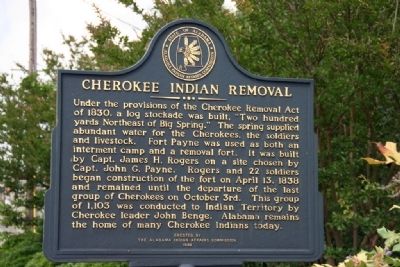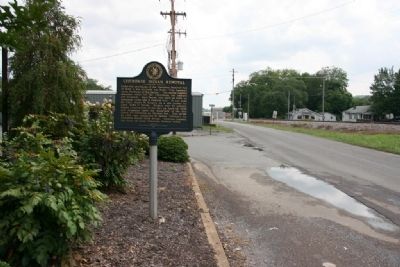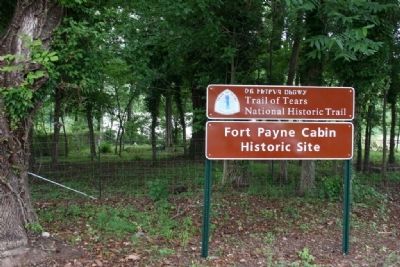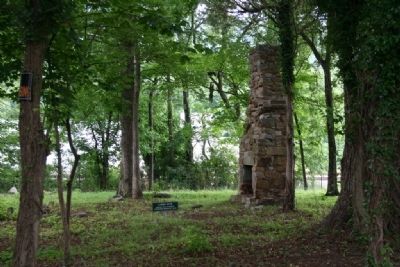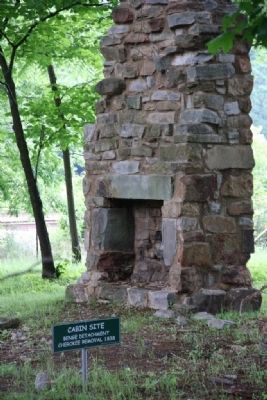Fort Payne in DeKalb County, Alabama — The American South (East South Central)
Cherokee Indian Removal
Under the provisions of the Cherokee Removal Act of 1830, a log stockade was built, “Two hundred yards Northeast of Big Spring.” The spring supplied abundant water for the Cherokees, the soldiers and livestock. Fort Payne was used as both an interment camp and a removal fort. It was built by Capt. James H. Rogers on a site chosen by Capt. John G. Payne. Rogers and 22 soldiers began construction of the fort on April 13, 1838 and remained until the departure of the last group of Cherokees on October 3rd. This group of 1,103 was conducted to Indian Territory by Cherokee leader John Benge. Alabama remains the home of many Cherokee Indians today.
Erected 1998 by The Alabama Indian Affairs Commission.
Topics and series. This historical marker is listed in this topic list: Native Americans. In addition, it is included in the Trail of Tears series list. A significant historical date for this entry is April 13, 1838.
Location. 34° 26.345′ N, 85° 43.333′ W. Marker is in Fort Payne, Alabama, in DeKalb County. Marker is at the intersection of Godfrey Avenue and Logan Street Southeast, on the right when traveling north on Godfrey Avenue. Touch for map. Marker is in this post office area: Fort Payne AL 35967, United States of America. Touch for directions.
Other nearby markers. At least 8 other markers are within walking distance of this marker. Main Street Historic District (about 600 feet away, measured in a direct line); Fort Payne Cabin Historic Site (about 600 feet away); Alabama (approx. 0.3 miles away); Whittler's Corner (approx. 0.3 miles away); Sequoyah (approx. 0.3 miles away); Wills Town Mission (approx. 0.3 miles away); Fort Payne’s Fort (approx. 0.3 miles away); Confederate Monument (approx. 0.4 miles away). Touch for a list and map of all markers in Fort Payne.
Also see . . . Trail of Tears. "History" entry (Submitted on January 2, 2017, by Byron Hooks of Sandy Springs, Georgia.)

Photographed By Larry Gertner, April 22, 2021
7. "Unto These Hills" Outdoor Drama Retells the Trail of Tears in Cherokee, NC
Millions of visitors have attended Unto These Hills, presented by the Cherokee Historical Association, which tells the story of the Cherokees and the Trail of Tears.
Click for more information.
Click for more information.
Credits. This page was last revised on April 22, 2021. It was originally submitted on October 9, 2010, by Timothy Carr of Birmingham, Alabama. This page has been viewed 2,871 times since then and 88 times this year. Photos: 1, 2, 3, 4, 5, 6. submitted on October 9, 2010, by Timothy Carr of Birmingham, Alabama. 7. submitted on April 22, 2021, by Larry Gertner of New York, New York. • Craig Swain was the editor who published this page.
